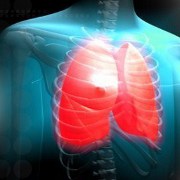 Photo: Getty Images
Photo: Getty Images
Recently, I was fixated on a documentary about last spring’s tsunami in Japan. The documentary chronicled a local doctor immediately following the tsunami struck Japan.
The doctor and the hospital created a special triage unit for survivors of the tsunami. But after 72 hours, the hospital received very few victims. However, after a week the hospital became overwhelmed with patients suffering from ʺtsunami lung.ʺ
This lung infection occurs when victims of the tsunami ʺinhale saltwater contaminated with mud and bacteria.ʺ Tsunami lung (also known as melioidosis) is a bacterial lung infection. According to the American Journal of Nursing, ʺscientists have cultured Burkholderia pseudomallei (a bacterium found in tropical areas) and Nocardia species from victims' lungs.ʺ
Tsunami lung is treated with antibiotics. However, many times victims do not receive the antibiotics because of the destruction of the tsunami.
The Journal also stated if the infection is not treated with antibiotics, the infection can ʺtravel through bloodstream to the brain, where they produced abscesses and caused neurologic problems, including paralysis.ʺ
Closer to home, there are various types of lung infections. According to the National Institute of Health, ʺduring a normal day, you breathe nearly 25,000 times. People with lung disease have difficulty breathing. Millions of people in the U.S. have lung disease. If all types of lung disease are lumped together, it is the number three killer in the United States.ʺ
Lung infections can be caused by a virus or bacteria. These different types of lung infections include:
• Bronchitis (chronic or acute)
• MRSA Lung Infection
• Pleurisy
• Pneumonia
• Pseudomonas Lung Infection
• Severe Acute Respiratory Syndrome (SARS)
• Tuberculosis, also known as TB
Symptoms of lung infections:
• Fever
• Chest congestion
• Chest pain
• Difficulty breathing or shortness of breath
• Cough
• Sore throat
Smokers and the elderly are also more prone to lung infections.
Chest X-rays, lung function tests, sputum samples and CBC are all possible tests your doctor may conduct to see if you have a lung infection.
Bacterial lung infections are treated with antibiotics. If there is a build-up of fluid in your lungs, more extensive treatment may be needed. A surgeon will decide whether to use a procedure to drain any infected fluid from your lungs.
According to the U.S. National Library of Medicine, ʺviral infections normally run their course without medications.ʺ Also, patients may be able to take over-the-counter anti-inflammatory drugs such as ibuprofen or acetaminophen to control their pain.
References:
Bronchitis - PubMed Health. National Center for Biotechnology Information. Retrieved January 10, 2012, from http://www.ncbi.nlm.nih.gov/pubmedhealth/PMH0002078
Consequence of Disaster: Tsunami Lung: Melioidosis is seen in some survivors. NursingCenter. Retrieved January 10, 2012, from http://www.nursingcenter.com/library/JournalArticle.asp?Article_ID=620495
Infectious Disease: In Disaster’s Wake: Tsunami Lung. National Center for Biotechnology Information. Retrieved January 10, 2012, from http://www.ncbi.nlm.nih.gov/pmc/articles/PMC1310941
Lung Diseases: MedlinePlus. National Library of Medicine - National Institutes of Health. Retrieved January 10, 2012, from http://www.nlm.nih.gov/medlineplus/lungdiseases.html
Lung Infection-A Public Health Priority. National Center for Biotechnology Information. Retrieved January 10, 2012, from http://www.ncbi.nlm.nih.gov/pmc/articles/PMC1326257
MRSA as a cause of lung infection including air. [Eur Respir J. 2009] - PubMed - NCBI. National Center for Biotechnology Information. Retrieved January 10, 2012, from http://www.ncbi.nlm.nih.gov/pubmed/19948913
Pleurisy - PubMed Health. National Center for Biotechnology Information. Retrieved January 10, 2012, from http://www.ncbi.nlm.nih.gov/pubmedhealth/PMH0002347
Pneumonia - PubMed Health. National Center for Biotechnology Information. Retrieved January 10, 2012, from http://www.ncbi.nlm.nih.gov/pubmedhealth/PMH0001200
Pseudomonas aeruginosa Pyocyanin Is Critical for Lung Infection in Mice. National Center for Biotechnology Information. Retrieved January 10, 2012, from http://www.ncbi.nlm.nih.gov/pmc/articles/PMC427412
Pulmonary tuberculosis - PubMed Health. National Center for Biotechnology Information. Retrieved January 10, 2012, from http://www.ncbi.nlm.nih.gov/pubmedhealth/PMH0001141
Severe acute respiratory syndrome (SARS) - PubMed Health. National Center for Biotechnology Information. Retrieved January 10, 2012, from http://www.ncbi.nlm.nih.gov/pubmedhealth/PMH0004460
Reviewed January 10, 2012
by Michele Blacksberg RN
Edited by Jody Smith




Add a CommentComments
There are no comments yet. Be the first one and get the conversation started!